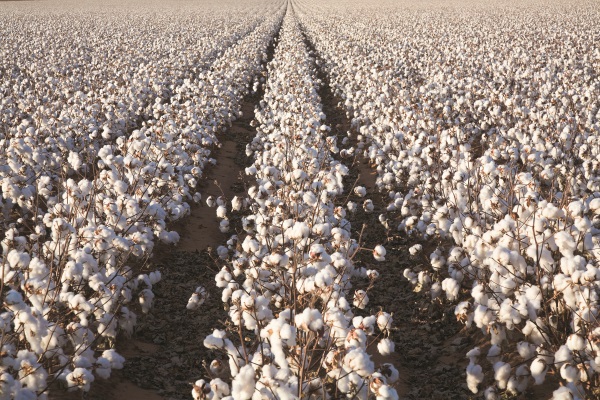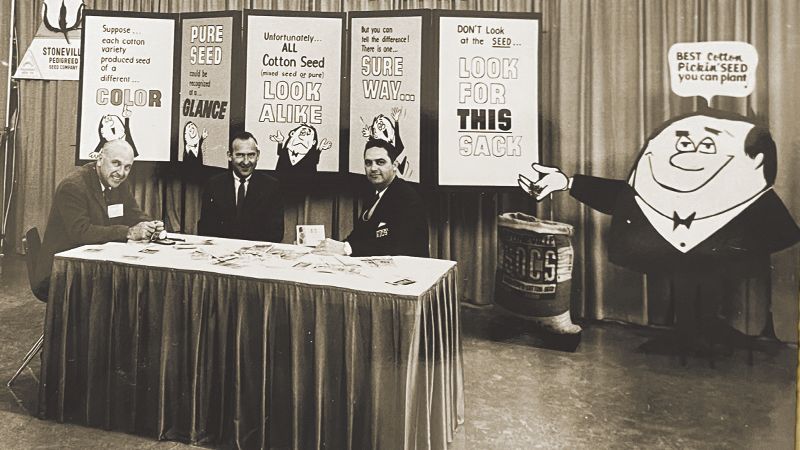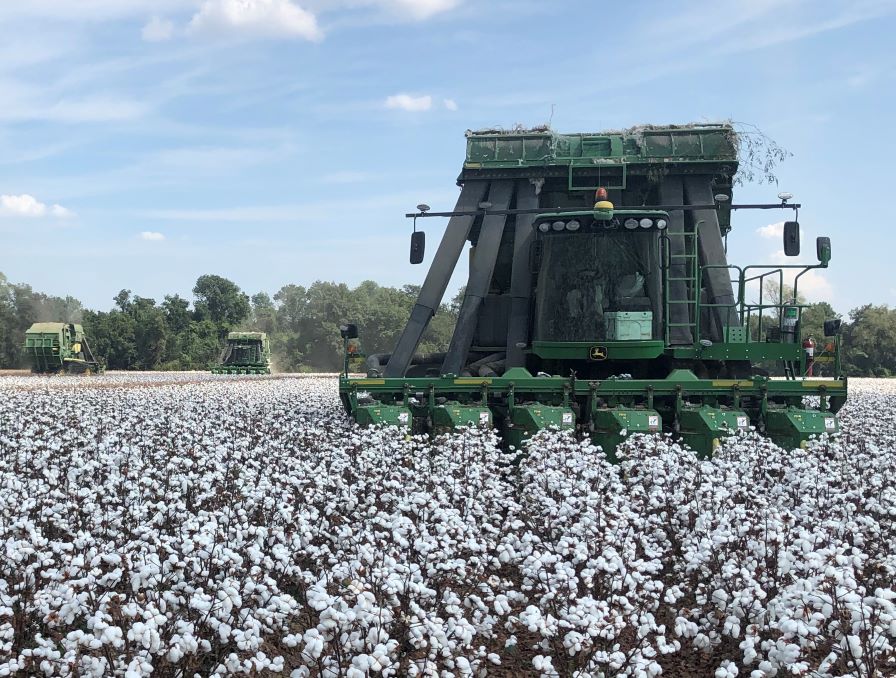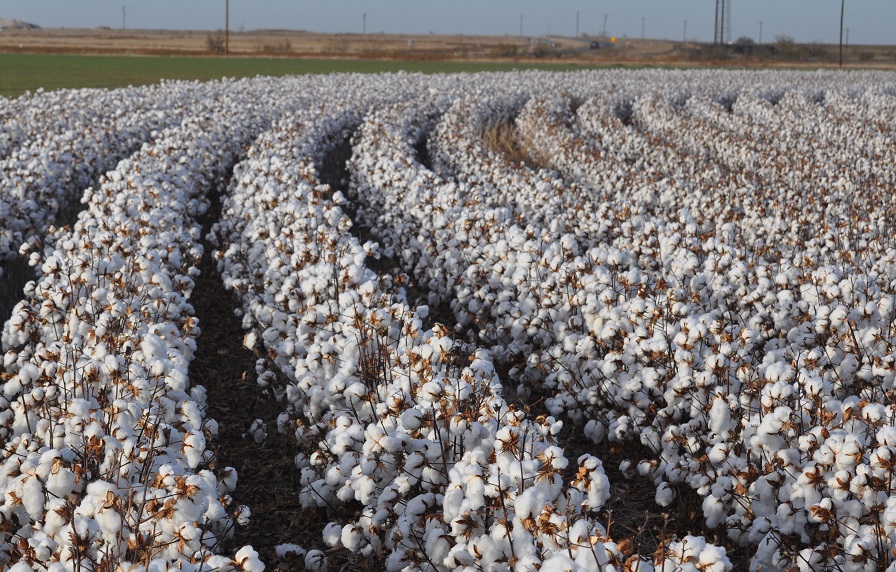Exploring Potential for Biologicals in Cotton
Biologicals. Microbials. Biostimulants. Biopesticides. However you choose to define them, the use of biological products in agriculture is not a new concept. They have been a key component in specialty crop production throughout the world and are now looking to find their way — and their niche — in row crop production.
Innovative companies have developed and provided these specialized products for decades. And with that success, it’s no surprise that multinational companies like Corteva, Bayer, Syngenta, BASF, and Valent are now becoming active in the biocontrol market.
As for cotton, some might say the market has been involved with biopesticides since the introduction of Bt (Bacillus thuringiensis) products like DiPel in the 1970s and morphing into the Bt biotech traits with the market introduction of Bollgard in 1996. But today, interest among cotton growers in biological enhancements for things like seed treatments and fertilization is increasing. So are the questions. The answers, however, are a bit more complicated.
What’s the Current Status of Biologicals in the U.S.?
Lawrence Middler, Biologicals Senior Analyst for AgbioInvestor, a leading source of global crop protection market information and analysis for the industry, recently shared thoughts on the U.S. market with AgriBusiness Global (a sister publication to Cotton Grower® within Meister Media Worldwide).
“For the bio-aligned market (products defined as being adjacent to ‘true-biologicals’ such as fermentation products, copper and sulfur fungicides, and hybrid biological products where a conventional pesticide is also included), the U.S. market is led by seed treatments,” says Middler. “On the foliar biopesticide side, products based on Bacillus spp. remain important. Both maize and soybeans in the row crop market were key crop outlets, indicating that there is already a well-established row crop market for biopesticides in the U.S.”
Middler also noted significant market development for bionematicides and nitrogen fixing microbials.
“Net cash farm incomes fell in 2023 and are also forecast to decline in 2024 and 2025,” he points out. “Therefore, I would expect that growers will increasingly be looking to adopt products which can drive efficiencies in input usage. This will include further adoption of nitrogen fixing products, phosphate solubilizers, and so on.
“Fertilizer prices, although having fallen from the peaks in 2022, remain high by historical standards. A number of companies have been successful in marketing optimized nitrogen fixing products to growers, with the key to success being heavily influenced by product efficacy and working with growers through the distribution channel to communicate the optimal use of the products.
“The bionematicide market, both for microbials and natural product-based actives, is also likely to continue growing strongly as a number of older classes of nematicide chemistry have come under regulatory pressure or left the market,” adds Middler.
Based on market research, Middler believes that U.S. growers are generally receptive to using biological product usage, even in row crops where there is already a sizeable market for biologicals.
“We can expect innovation to be at the forefront of the U.S. market, with a greater interest in biostimulants, as well as plant extract products both on the biopesticide and biostimulants side.”
Working to Determine Biologicals Potential for Cotton
Brian Pieralisi, Mississippi State University Extension Cotton Specialist, has been managing a multi-state research project on biologicals in cotton, working in cooperation with other Extension specialists across the Cotton Belt. The project, now ending its second year of study, included 21 locations in 13 states in 2024.
“The primary objective that we have is to see if we can use biological or microbial products in a cotton production system across the Belt and see if there’s a way that they improve nitrogen use efficiency,” he explains.
Six different products are being evaluated at each study location, with each product being paired with a nitrogen rate of 40 pounds per acre as a check. Those checks are then compared to a nitrogen curve starting with zero nitrogen and increasing in 40-pound increments up to 160 pounds of nitrogen.
“What we have is a pretty low nitrogen rate in terms of cotton, especially across the Belt,” says Pieralisi. “We felt like that would be a good starting point to try to capture if there was any benefit or synergism between the product and nitrogen to see if it could keep up with or possibly take the place of some nitrogen.
“That’s ultimately what we’re trying to see,” he adds. “Is there something that adds value in place of an input? In order to increase nitrogen use efficiency, can we back up on our nitrogen rate with this product or is there a product that would shine?”
Study results from 2023 showed no differences in the performance of the microbial products with the 40-pound check. The only differences came from increasing the nitrogen rate. To date, Pieralisi only has 2024 data in hand from Mississippi and Oklahoma.
“There’s a lot of data still out there and what we have is very preliminary,” notes Pieralisi. “But from what I’ve seen from five locations, it looks to be following the same trend this year.”
However, that’s not discouraging considering the questions and interest that growers seem to have about biological products.
“The level of interest is a little surprising to me,” says Pieralisi. “Growers seem to be very interested in it. And I’m not sure if this is because it just seems like something that would work or if it’s just been pitched a certain way. I’ve never seen a data set that was robust enough to be like ‘Wow, this stuff really works.’”
He admits that there’s a lot of clinical trial data in the market that may show a 100-pound yield increase, but it’s hard to capture that replicated across multiple locations.
“We really have to show something for it to stand out,” he says. “The way I look at it, any time you spend enough money and resources trying to find something that’ll work, somebody will find something. Do we have something right now? I don’t know. I tend to think not yet, but we might be on to something. I guess we’ll find out.”
In terms of determining the value and fit for biologicals in cotton, Pieralisi says they’re still taking baby steps.
“Each crop market has some type of a biological product, and it might be a little more adopted in some of the grain markets than it is right now in cotton,” he explains. “But there’s still a lot of interest from both a grower and retail standpoint – enough to where we’re pretty aggressively trying to find an answer.”








